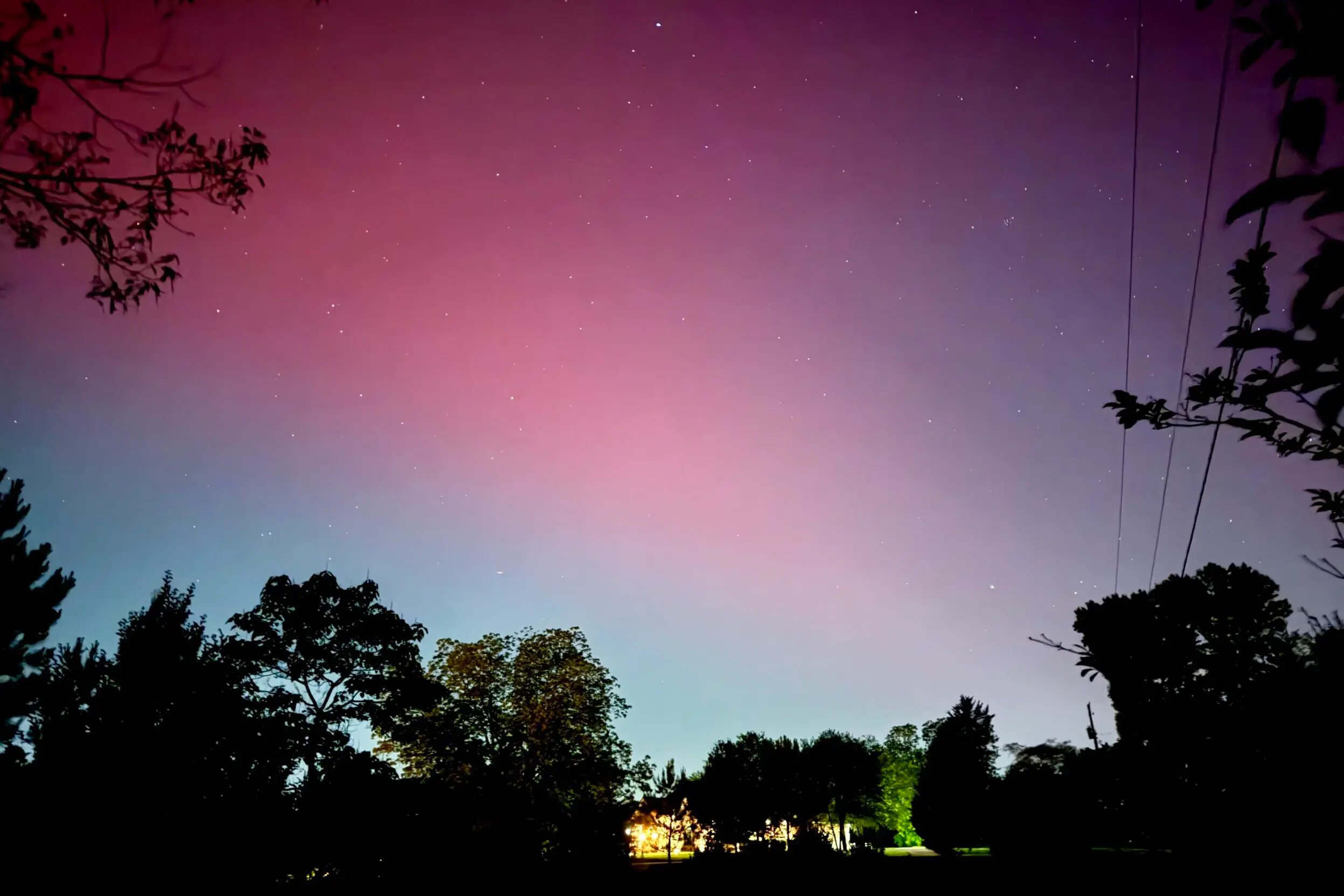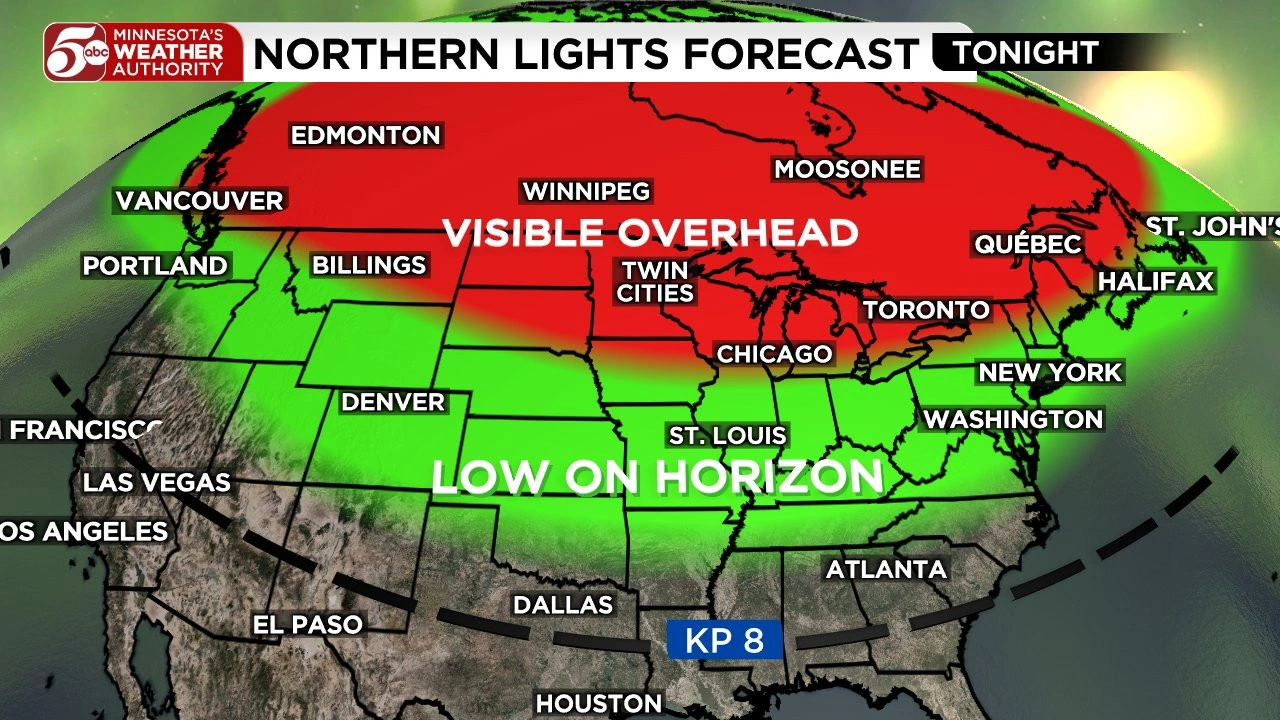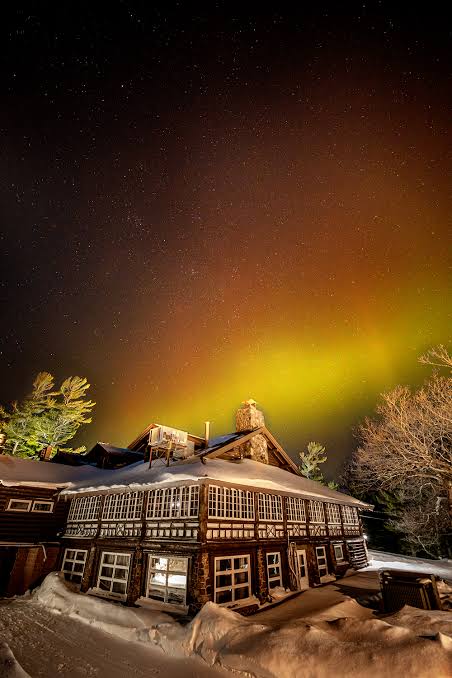Tonight, stargazers across the northern United States might have a chance to witness the breathtaking beauty of the Aurora Borealis, commonly known as the Northern Lights. Typically visible in higher latitudes near the Arctic, geomagnetic storms can occasionally push the auroras further south, allowing more people to experience this natural spectacle.
### What Causes the Northern Lights?
The Northern Lights are a result of solar winds—streams of charged particles emitted by the sun—that interact with the Earth’s magnetic field. When these particles collide with gases in the Earth’s atmosphere, they create stunning light displays that can appear in a range of colors, from greens to purples and reds. The intensity and visibility of the auroras depend on solar activity and geomagnetic conditions.
### Tonight’s Forecast
Meteorologists and space weather experts have indicated that current solar activity is heightened, leading to a strong geomagnetic storm forecast for tonight. This storm can push the auroral oval further south, making the Northern Lights visible in states that usually don’t see them.
### States Likely to Witness the Aurora
1. **Alaska**: Always at the top of the list, Alaska is the best state to see the Northern Lights. Locations like Fairbanks and Anchorage are excellent viewing spots. The clear, dark skies away from city lights enhance visibility.
2. **Washington**: In the Pacific Northwest, particularly in the northern regions, there’s a good chance to see the auroras. Areas like Mount Rainier National Park can provide stunning views.
3. **Oregon**: Similar to Washington, the northern part of Oregon may see the Northern Lights tonight. Places like the Columbia River Gorge are excellent for dark-sky viewing.
4. **Idaho**: Northern Idaho, especially around Coeur d’Alene and Sandpoint, offers potential viewing opportunities, particularly in areas away from city lights.
5. **Montana**: The wide-open skies in Montana can be perfect for aurora watching. Areas near Glacier National Park or the Flathead Valley might experience visible displays.
6. **North Dakota**: Known for its dark skies, North Dakota is a prime candidate. Locations like Theodore Roosevelt National Park are ideal for witnessing the Northern Lights.
7. **Minnesota**: Northern Minnesota, especially near the Canadian border, has historically been a good spot for aurora sightings. The Boundary Waters Canoe Area wilderness is particularly remote and dark, making it a great viewing location.
8. **Wisconsin**: Areas in northern Wisconsin, such as Bayfield and Ashland, may experience auroral activity tonight, especially if the skies are clear.
9. **Michigan**: The Upper Peninsula is often blessed with visibility of the auroras. Locations like Isle Royale National Park can offer stunning displays.
10. **New York**: While not as commonly seen, northern regions of New York, especially around the Adirondack Mountains, could catch a glimpse of the Northern Lights if conditions align.
### Tips for Viewing
– **Check the Weather**: Clear skies are crucial. Cloud cover can obstruct the view, so it’s essential to monitor local weather conditions.
– **Find Dark Locations**: The further you are from city lights, the better your chances of seeing the auroras. National parks or remote areas are ideal.
– **Be Patient**: The lights can be unpredictable. It’s a good idea to give yourself time and remain patient.
– **Use Apps and Websites**: There are numerous apps and websites that provide real-time aurora forecasts, which can help you pinpoint the best times to look.
### Conclusion
If you’re in one of the states mentioned above, keep an eye on the sky tonight! The Northern Lights are an awe-inspiring sight that remind us of the beauty and mystery of our planet. Whether you’re a seasoned aurora chaser or a curious onlooker, tonight may just offer a magical experience worth remembering.




